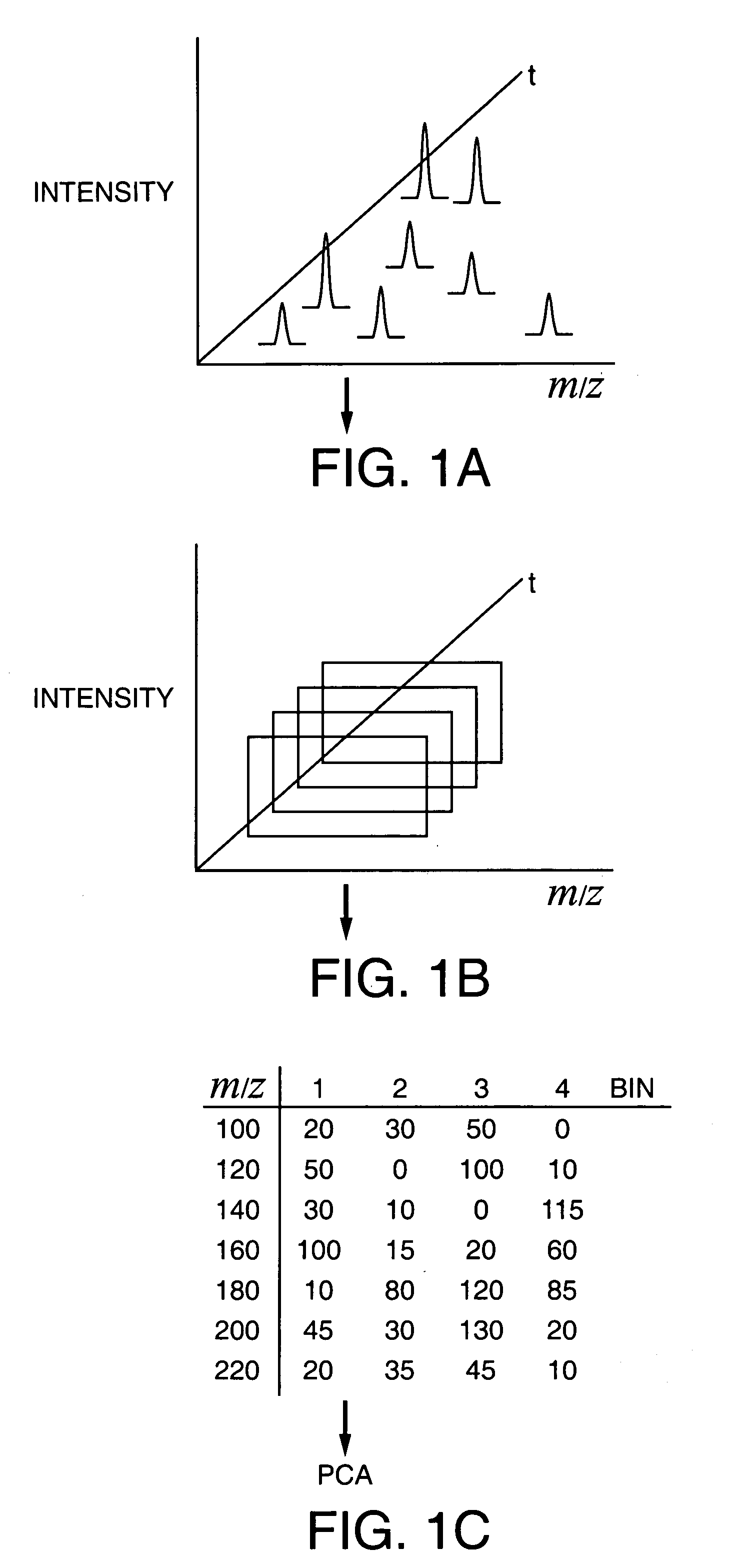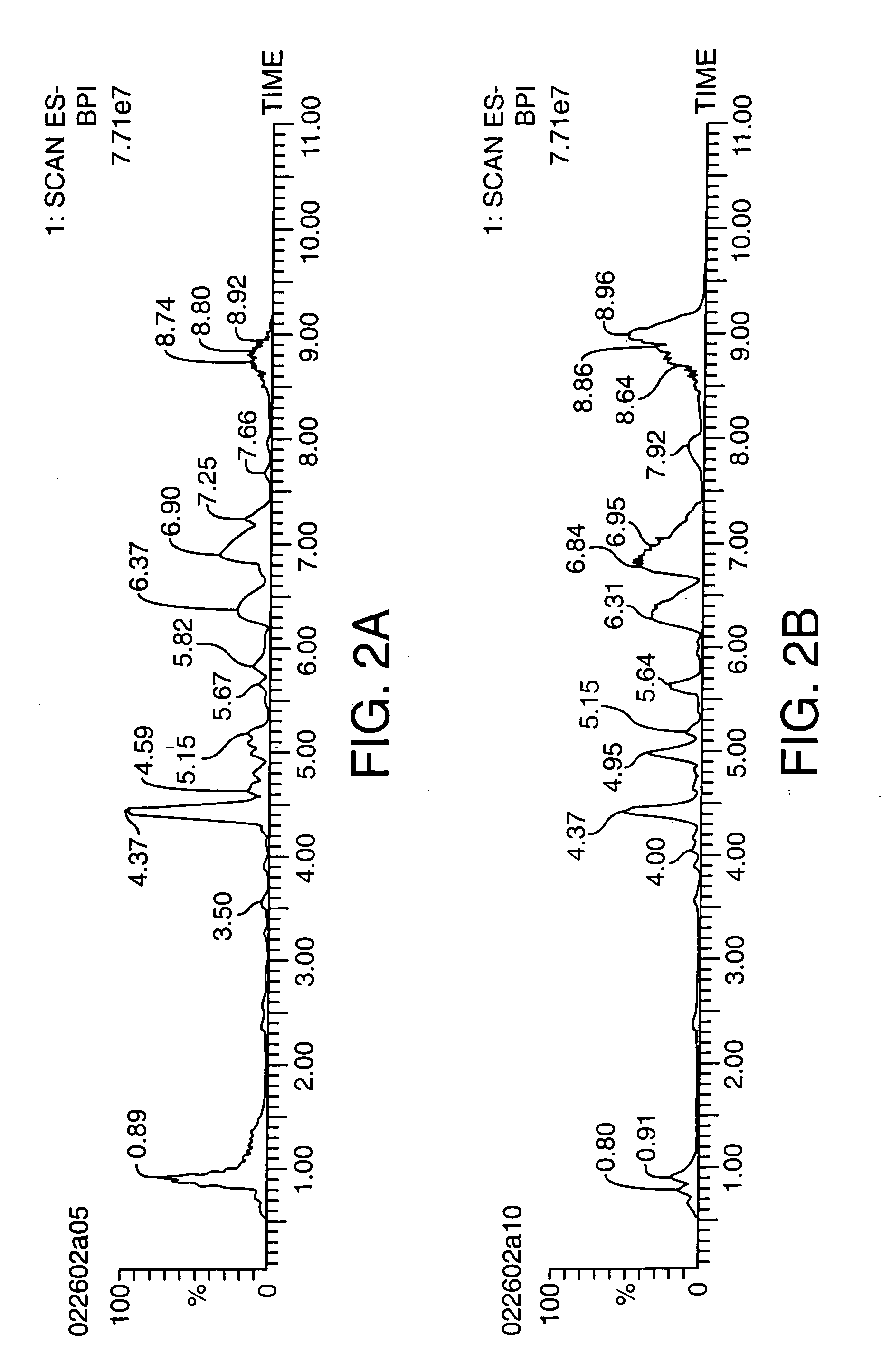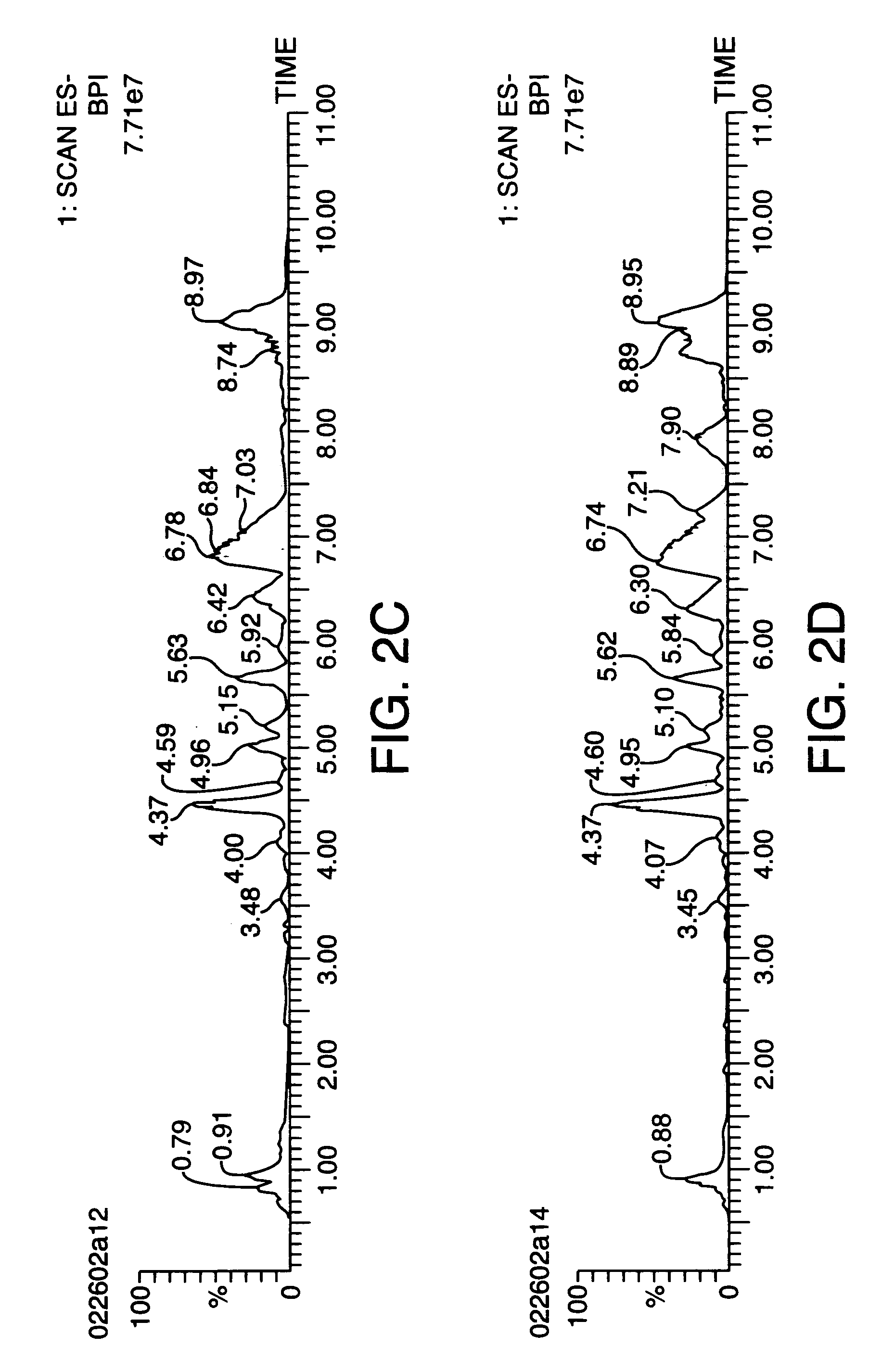Method of using data binning in the analysis of chromatography/spectrometry data
a technology of chromatography/spectrometry data and data binning, which is applied in the field of multi-dimensional data analysis, can solve the problem of losing the ability to discriminate between data points that only differ by that parameter
- Summary
- Abstract
- Description
- Claims
- Application Information
AI Technical Summary
Benefits of technology
Problems solved by technology
Method used
Image
Examples
example
Rat Urine Samples:
[0038] A total of 20 rat samples were used for this experiment. The rats were divided into four (4) groups. Group I received the dosing matrix alone, Group II, III, and IV were orally dosed with compounds A, B, and C, respectively. Samples of rat urine were collected at two time points, 0-8 and 8-24 hours after dosing. The rat urine was stored frozen at −20° C. prior to analysis.
[0039] The chromatography was performed using a Waters Alliance 2795 HT equipped with a column oven and a Waters 2996 PDA detector. A 20 μL / min injection of rat urine (diluted 1:4 with distilled water) was made onto a 10 cm×2.1 mm Waters Symmetry C18 3.5 μm column. The column was maintained at 40° C. and eluted under gradient conditions at a flow rate of 600 μL / min, where eluant “A” was 0.1% aqueous formic acid, and eluant “B” was acetonitrile. The column was maintained at 100% A for the first minute, then the mobile phase was rapidly increased to 30% B over the next 7 m...
PUM
| Property | Measurement | Unit |
|---|---|---|
| time | aaaaa | aaaaa |
| time | aaaaa | aaaaa |
| flow rate | aaaaa | aaaaa |
Abstract
Description
Claims
Application Information
 Login to View More
Login to View More - R&D
- Intellectual Property
- Life Sciences
- Materials
- Tech Scout
- Unparalleled Data Quality
- Higher Quality Content
- 60% Fewer Hallucinations
Browse by: Latest US Patents, China's latest patents, Technical Efficacy Thesaurus, Application Domain, Technology Topic, Popular Technical Reports.
© 2025 PatSnap. All rights reserved.Legal|Privacy policy|Modern Slavery Act Transparency Statement|Sitemap|About US| Contact US: help@patsnap.com



